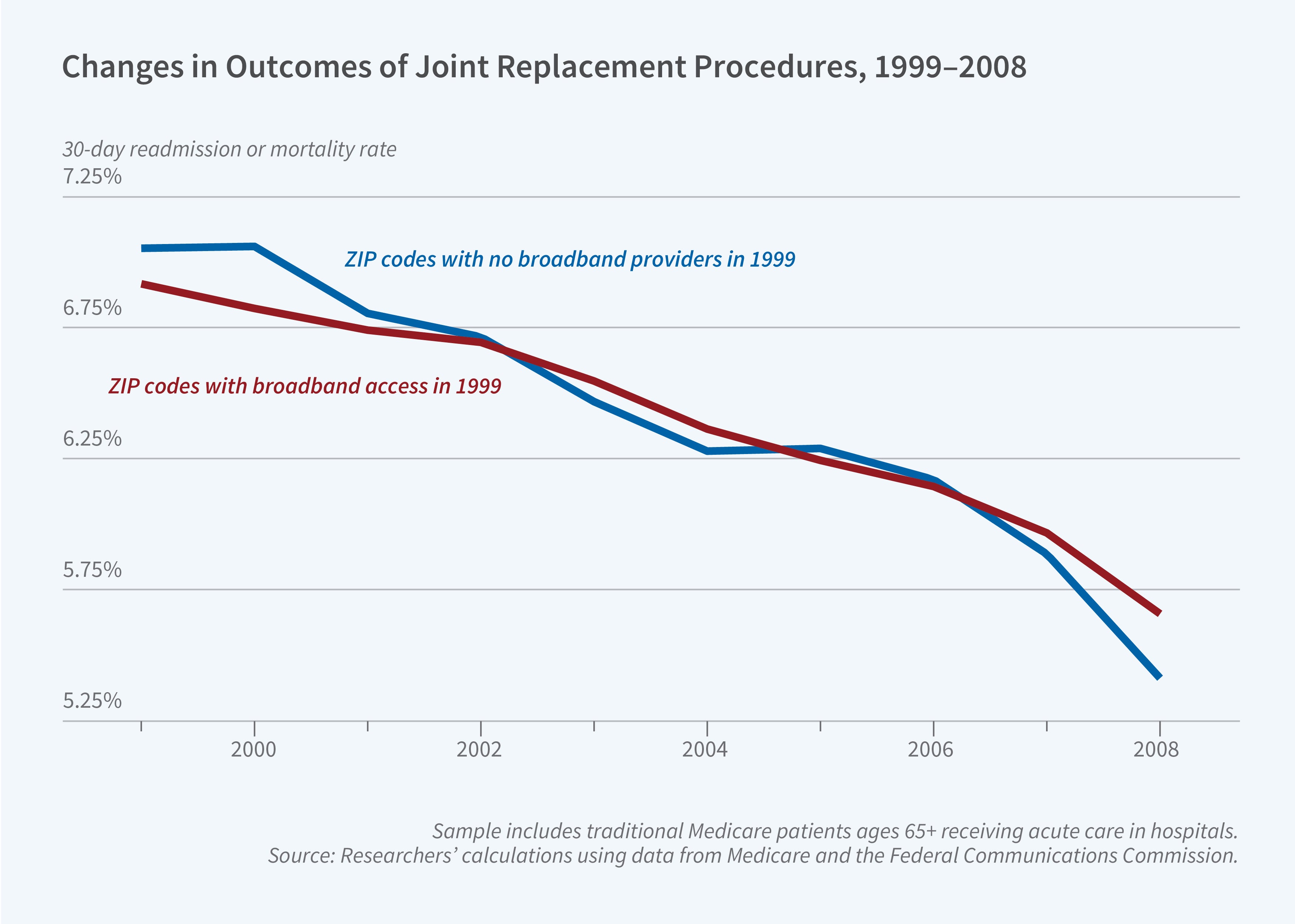Broadband Internet Access Improves Health Outcomes for Medicare Patients

Access to a high-speed internet connection provides patients with a low-cost means of collecting information related to medical decisions and the quality of medical care providers. In Broadband Internet Access and Health Outcomes: Patient and Provider Responses in Medicare (NBER Working Paper 31579), Jessica Van Parys and Zach Y. Brown link information on broadband availability by ZIP code from the Federal Communications Commission to Medicare claims data from 1999 to 2008. They analyze the effect of high-speed internet access on health outcomes and provider choices for Medicare beneficiaries who are undergoing common procedures.
High-speed internet access is associated with better outcomes for planned, but not emergency, medical procedures.
Internet access for US households expanded in the early 2000s. Roughly 20 percent of Medicare beneficiaries had four or more broadband providers in their ZIP Code in 1999; by 2008, almost all did. Over this period, internet usage among Medicare beneficiaries increased by 40 percentage points. Those living in ZIP Codes with broadband access were 18 percent more likely to use the Medicare website.
The study focuses on patients receiving joint replacements, either hip or knee, or colonoscopies, common procedures among Medicare beneficiaries. It employs a well-defined health outcome, the 30-day readmission or mortality rate, as a measure of provider quality. These procedures are planned in advance, allowing time for patients to research providers and consult with different specialists. Acute myocardial infarctions (AMIs) and strokes provide a placebo sample as patients are unlikely to research providers in advance of these unplanned events.
Between 1999 and 2008, the researchers’ measure of patient outcomes improved for joint replacements, colonoscopies, AMIs, and strokes. To determine the role of expanded broadband access in this improvement, the researchers first compare trends in outcomes for beneficiaries who lived in areas with no broadband providers in 1999 to trends for beneficiaries who lived in areas with at least one. For joint replacements and colonoscopies, patients with no broadband providers in 1999 had a higher initial rate of readmission or mortality, but the gap between their rate and that of patients living in areas with broadband access throughout the sample period converged by 2008 as patients in the former group gained broadband access. For AMIs and strokes, the gap narrowed slightly but convergence was less evident.
The researchers use the staggered rollout of broadband providers across communities to formally estimate the impact of high-speed internet on outcomes. When the number of broadband providers in a community increased from zero to four or more, the readmission probability for joint replacements was reduced by 5.7 percent and hospitalizations following a colonoscopy fell by 6.4 percent. Broadband expansion did not affect AMI and stroke outcomes.
As patients gained broadband access, they increasingly chose hospitals with lower readmission rates. These findings suggest that broadband access improved outcomes by facilitating patient selection of high-quality providers rather than by improving providers. Effects were larger in less competitive hospital markets where information appears to be more valuable in aiding quality-based choices. For joint replacements, readmission rates fell 7 percent for patients gaining broadband access in markets without substantial competition. The researchers estimate that 12 percent of the 1999-to-2008 improvement in joint replacement outcomes was attributable to broadband rollout.
— Leonardo Vasquez
The researchers acknowledge funding from the National Institute on Aging grant numbers P30A012810 and T32-AG000186.


